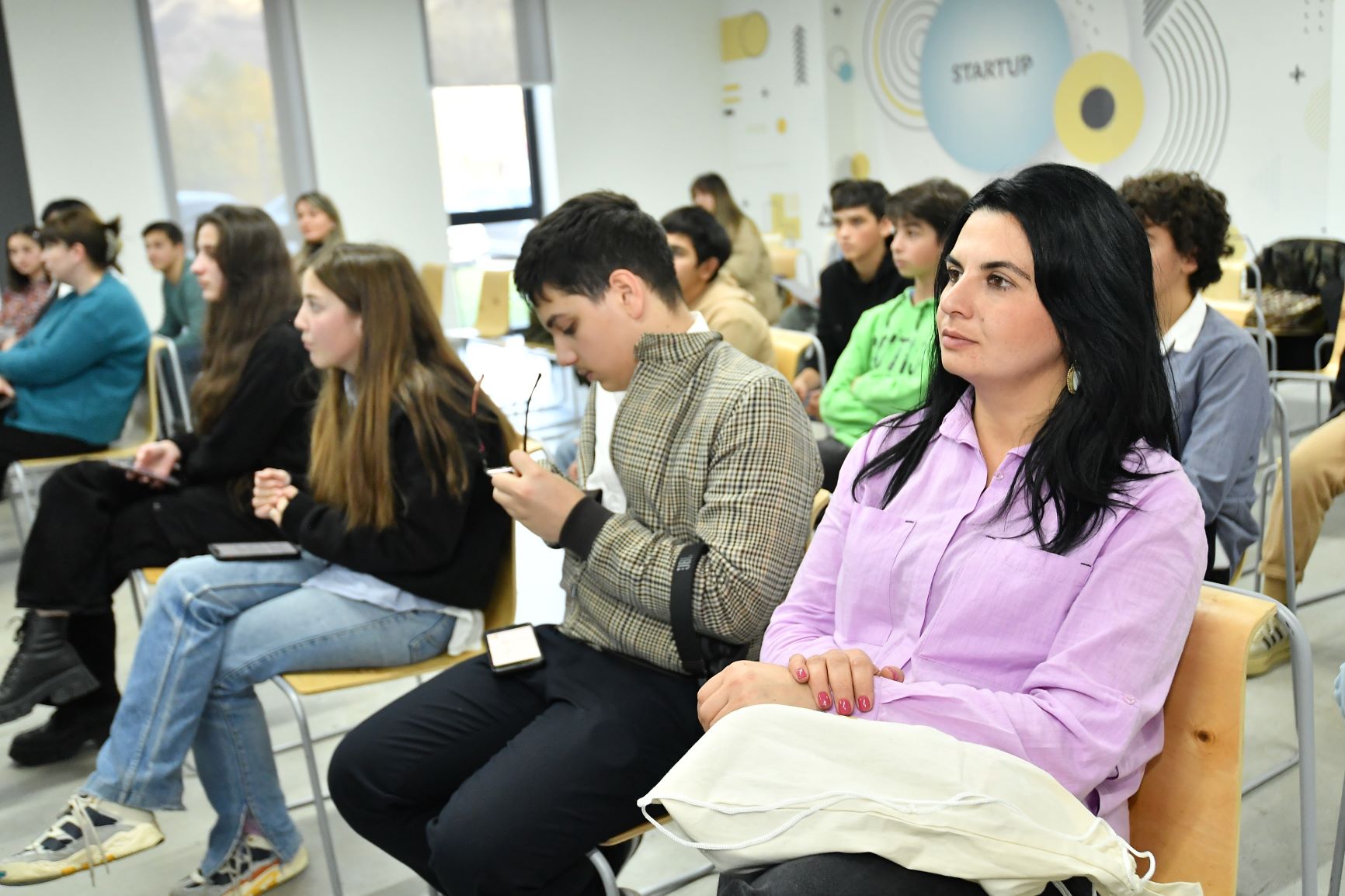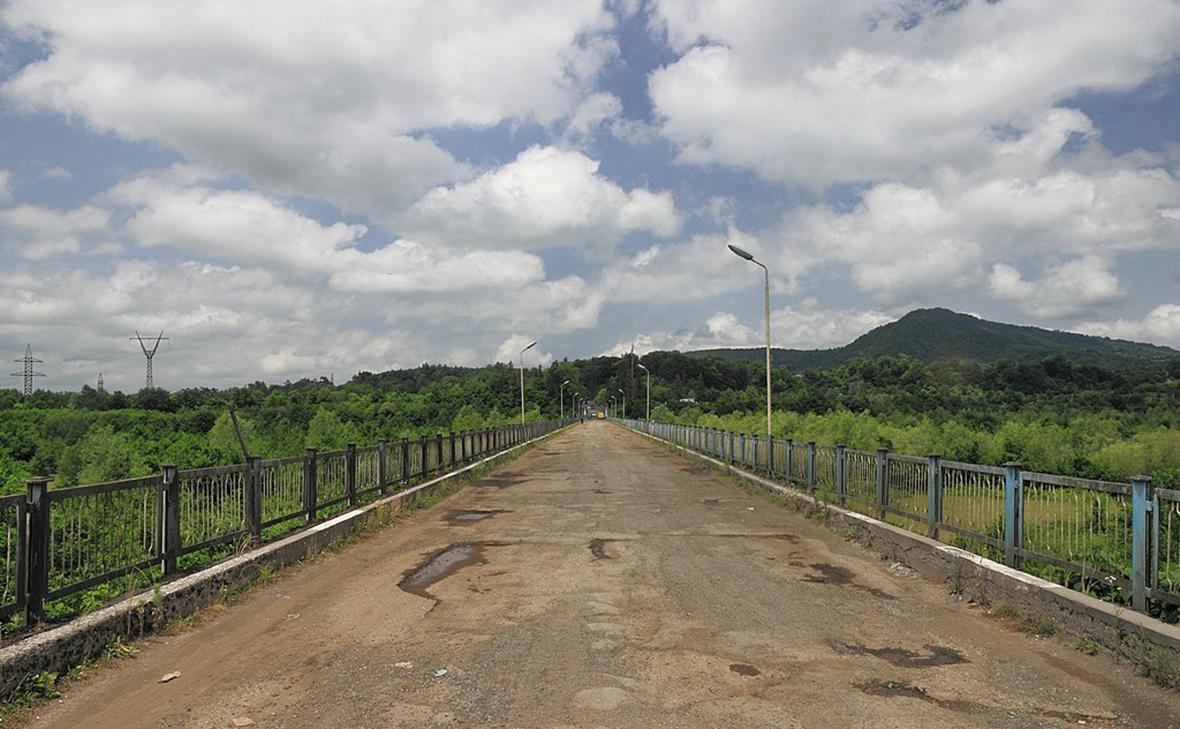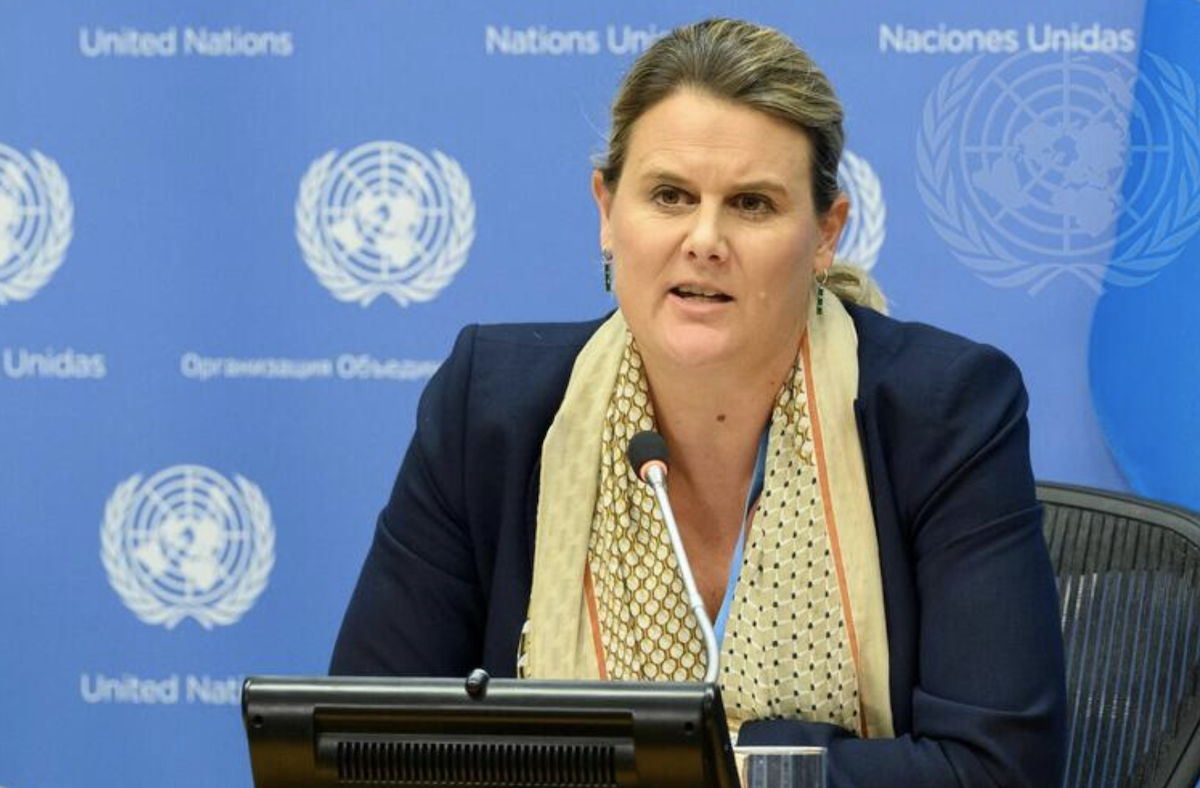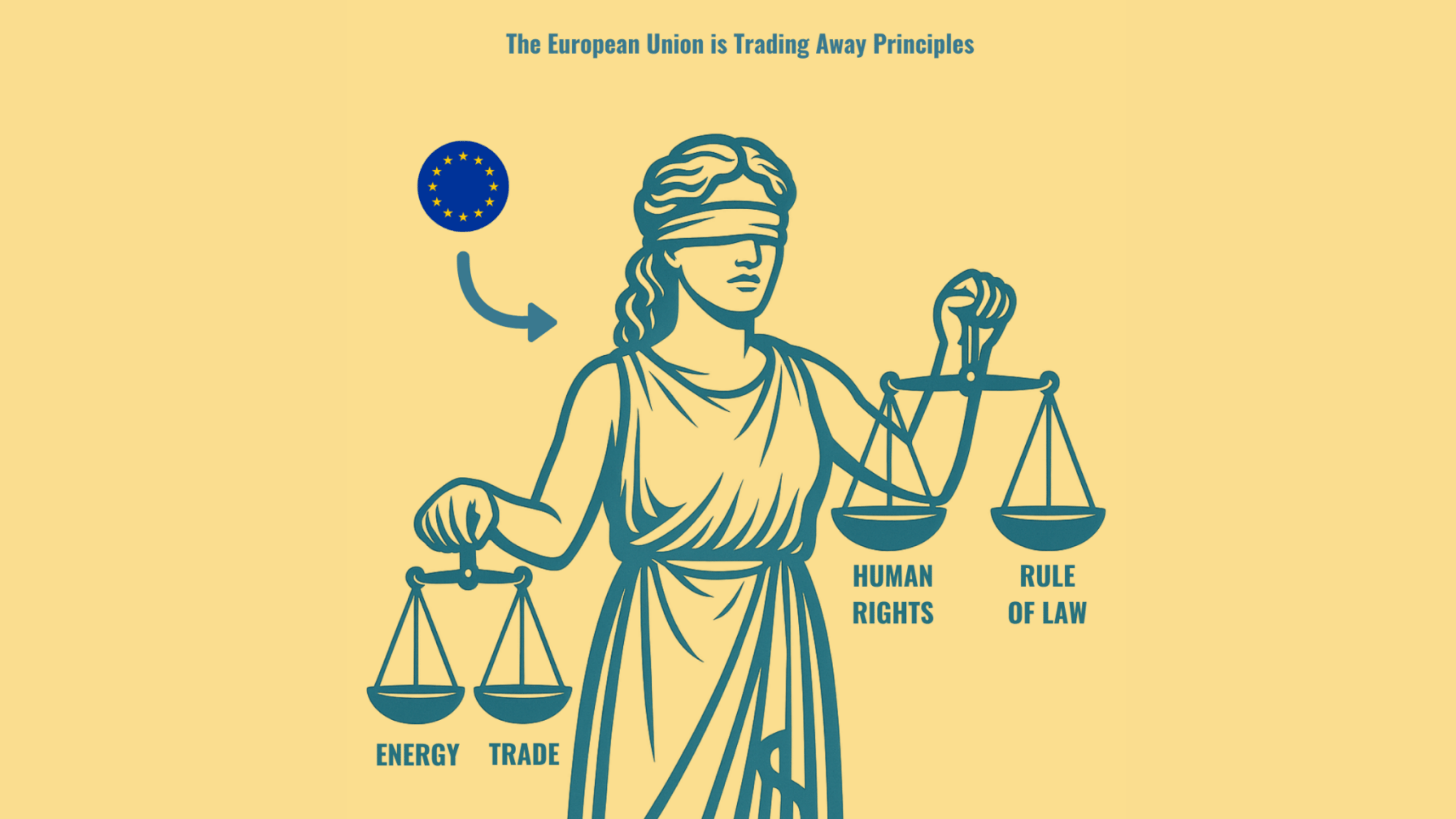The long and difficult path of the Georgian Farmers’ Association to the “green office”
Reducing plastic waste
The use of ceramic dishes instead of disposable plastic, aerators on water taps, and containers for separate waste collection, energy-efficient lighting and heating are just a small list of measures by which the Georgian Farmers’ Association is trying to minimize damage to the environment.
Since last year the organization has been creating a “green office” and completely changed its internal policies.
- How Silk Hospitality was able to reduce the use of plastic items to a minimum
- Youth against climate change at a regional level with support of EU and CENN
Particular emphasis is placed on reducing plastic waste, the most hazardous to the environment. Disposable items are no longer used in virtually any association office.
Now it’s the turn of thousands of farmers. They face a serious task – to minimize the amount of plastic products that are used in production, mainly packaging.
When and why did the Georgian Farmers Association decide to pursue environmentally sustainable policies? Ilia Kunchulia, the organization’s project manager, talks about his own experience.
Georgian Farmers’ Association (GFA) is an umbrella organization founded in 2012, which unites more than 5,000 farmers.
The mission of the association is to strengthen the agriculture sector in Georgia and improve quality of life of Georgian farmers through bringing them together and improve their visibility. GFA’s core activities are based on providing farmers with support and advocacy, building their capacity and networking capabilities, and empowering them and the agriculture sectors they are involved in by bringing the best agricultural practices and expertise.
The association has four regional offices: in Kakheti, Imereti, Samegrelo and Samtskhe-Javakheti.
Morning meeting at the “art studio” of a farming organization
The small office of the Georgian Farmers’ Association at first glance looks more like an art studio – many bright, varied photographs on white walls, colorful chairs and trash cans, and original lighting.
The workspace is divided by wooden shelves. A fragrant aroma emanates from multi-colored ceramic cups of coffee on the employees’ desks.
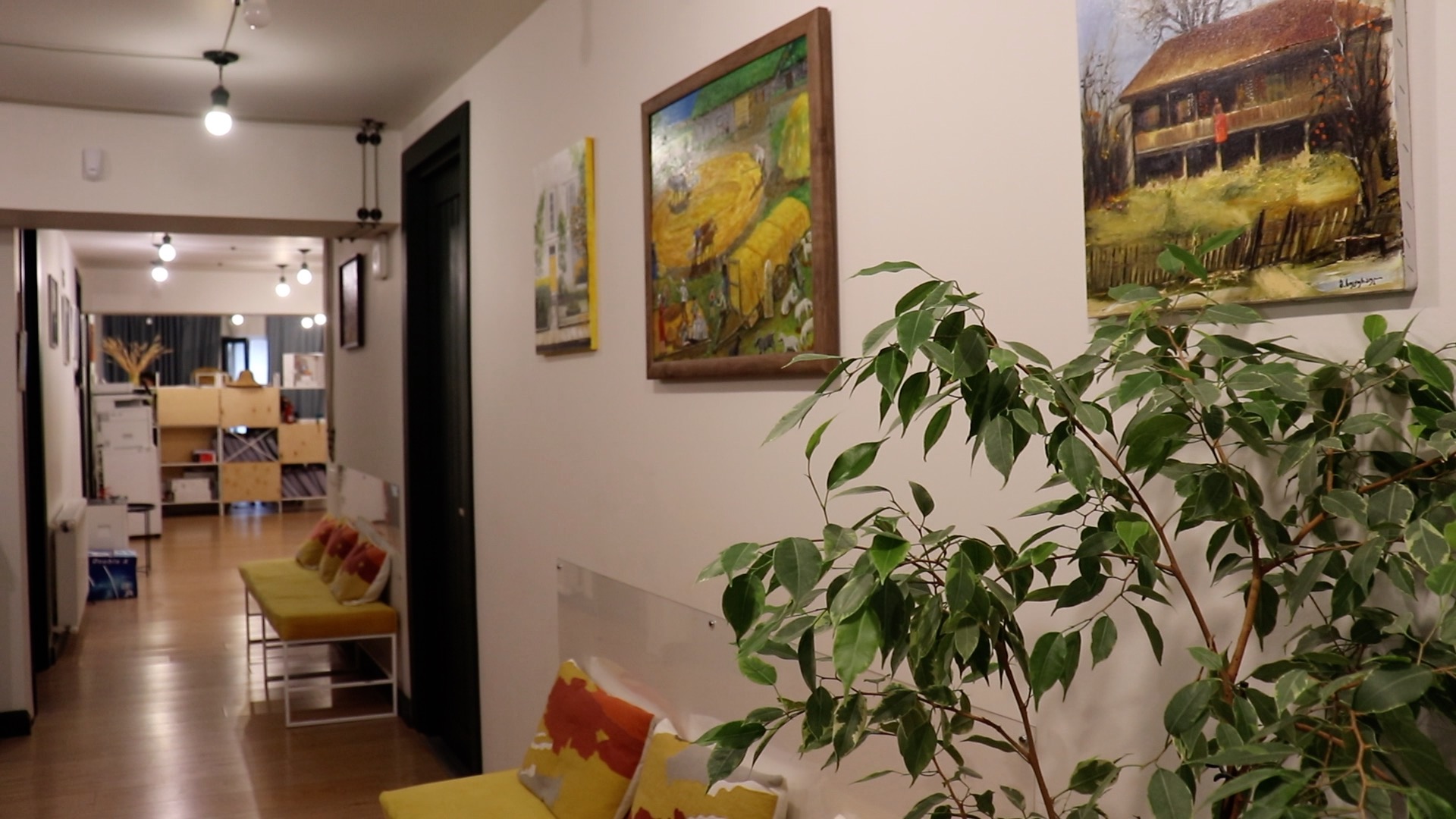
One of the topics that will be discussed is the issue of recycling lamps and batteries used in the office space. This is not an easy story. It’s hard to find a solution.
“No matter how much waste an organization generates, you pay the same subscription fee. If the tariff depended on the amount of waste, organizations would have more motivation to reduce it,” Ilia Kunchulia tells me.
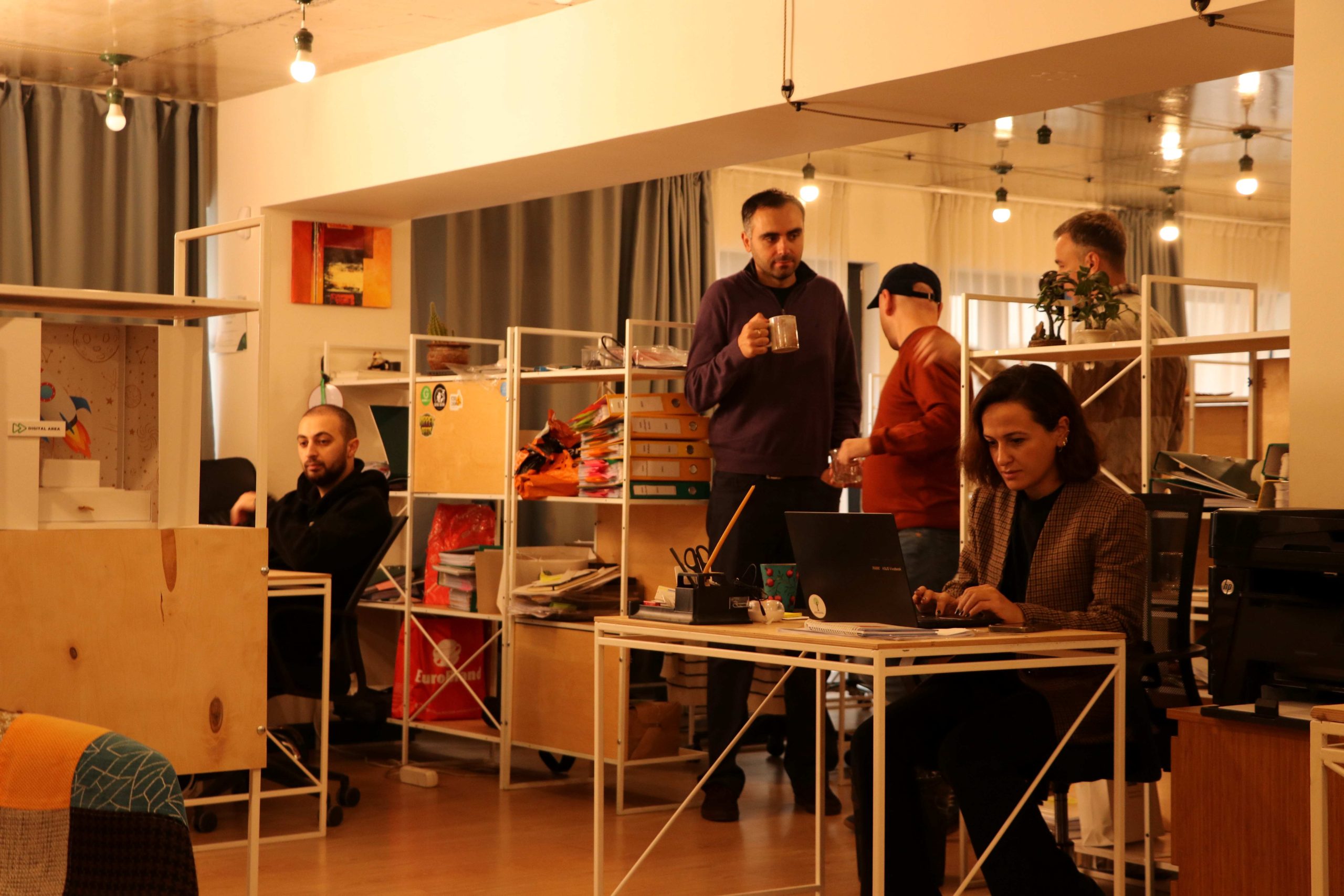
Ilya is project manager for the organization and has spent the last year trying to make reducing environmental damage an important component of all projects.
The farmers’ association began working on converting to a green office last year.
The history of transformation into a “green office” – the first steps
Ilya explains that the concept of a “green office” implies that an office can be environmentally friendly, because any building that consumes energy (electricity, gas), produces a large amount of waste, and has a negative impact on the environment.
“The first problem we thought about was the impact of our activities on the environment. Obviously, we meant a negative impact,” Ilia says, recalling that the first thing such an impact is associated with is the production of waste.
He means waste generated from office activities, as well as from field and non-office activities of the organization.
-
What is a “green office”?
People’s daily actions in the workplace can affect the environment in many ways. And today, the world is moving from unsustainable actions to smart decisions and green initiatives. Anyone can make these changes; to do this you just need to take small steps. CENN [an environmental NGO promoting sustainable development in the South Caucasus] shares information on how we can change the impact of our workplace for the benefit of our planet.
Green office checklist:
- Energy-efficient compact fluorescent bulbs
- Double-sided printing and copying
- Waste separation for recycling
- Hand-towels and cloth napkins
- A system is established for washing cloth items
- No individually packaged sugar and cream
- A “used goods area” in the office
- Equipment and appliances set to power-saving mode
- Equipment turned off during nights and weekends
- Radiators and heaters not blocked with furniture
- All doors and windows insulated in winter
- Memos posted to remind employees to turn off the lights when not needed
- A ceiling fan used in the summer time instead of air-conditioning
- Strategies developed for minimizing daily commute
- Computer monitors on sleep mode
At some point, all the waste was thrown out all together, and it was difficult to determine how serious the pollution was. Therefore the Tbilisi office of the Farmers’ Association began sorting garbage.
It turned out that every month the organization’s waste contained thousands of disposable cups, dozens of large 50-liter plastic cooler containers, countless sheets of paper and food containers.
“Obviously, plastic waste causes the greatest harm to the environment, since we know that it takes tens or hundreds of years to decompose. So we immediately started thinking about reducing them.”
First, the organization looked for waste recycling companies and began handing over sorted waste. The collected waste was delivered weekly to Tene. This company recycles plastic waste.
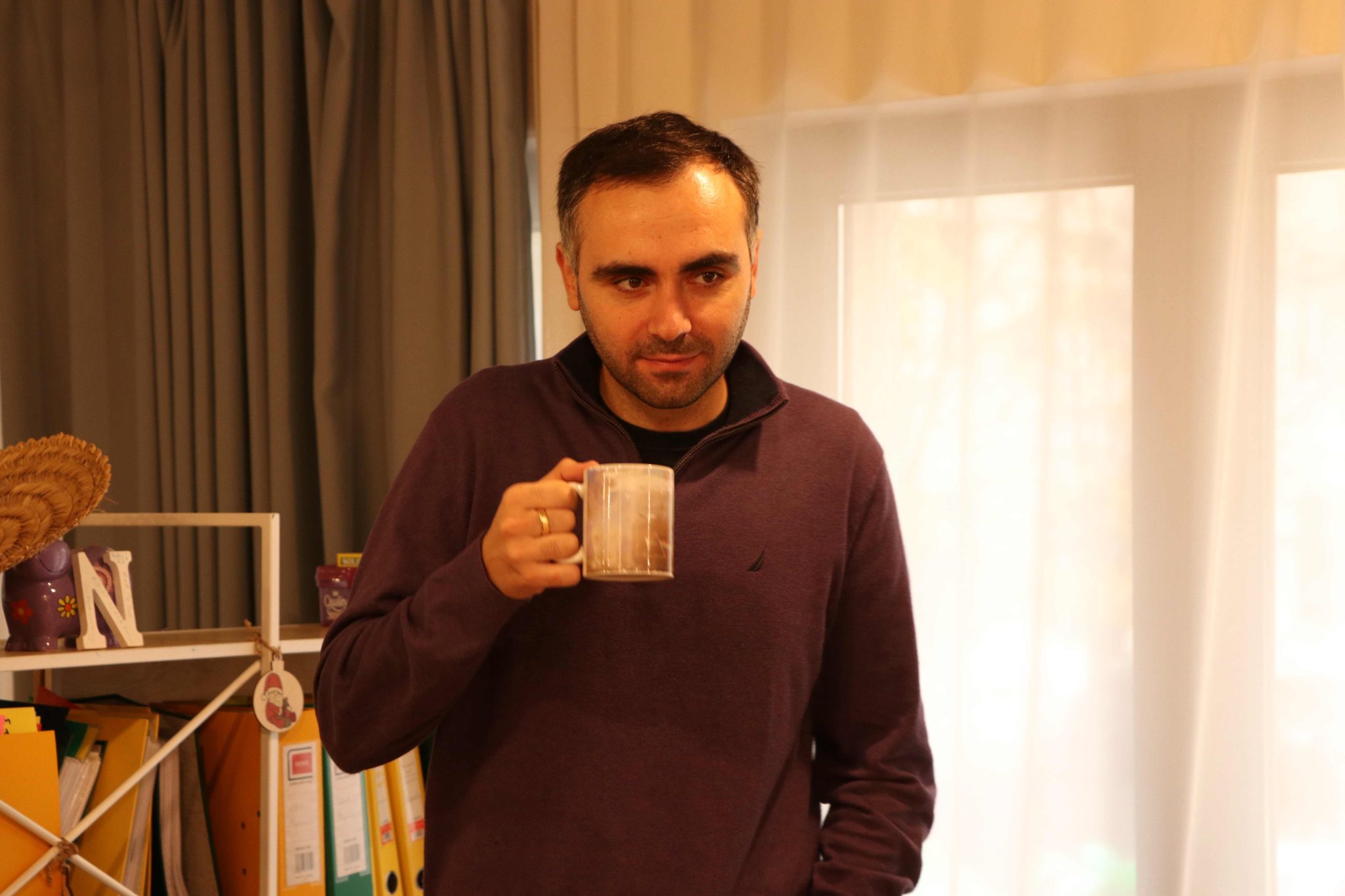
But from a logistical point of view, the process turned out to be complex and expensive. So we started thinking about a solution.
“We looked at the budget – how much we spent on buying these bottles and glasses, and it turned out that if we replace these bottles with a permanent water dispenser, it will pay for itself in less than a year.”
And so they did.
Now, instead of several containers of water, the office has one permanent cooler. There are only ceramic cups on the shelves in the kitchen.
“We used and threw away up to 3,000 disposable cups a month. After completely removing them from consumption and replacing them with reusable dishes, we were able to reduce their number by approximately 30-40 thousand, and they no longer end up in the environment.”
E – administration containers for separate waste collection, energy saving and other environmental measures
This is not the end of the road to creating a green office. The farmers’ association has also developed a strategy to reduce hazardous waste.
“I haven’t used a printer for two years. I switched to electronic document management as much as possible. My computer isn’t even connected to the printer. During this time, I only asked an employee twice to print two pieces of paper,”Ilia says, adding that if he had not personally changed this approach, he would not have been able to ask other office employees to do the same.
But even if you don’t print, the cartridge—the part of the printer that is responsible for printing—has an equally harmful impact on the environment.
Any paper that still ends up in office trash is thrown into separate containers. Their final destination is also a recycling company.
The Tbilisi office of the Georgian Farmers’ Association shares the concept of a “green office” in the field of energy saving.
Only energy-saving lamps are used throughout the building, and employees are careful not to waste electricity in a room where no one is working.
“The same thing happens with heating. We installed smart devices that control the system so that energy is used as efficiently as possible, and when the temperature reaches a certain level, it turns off.”
A market that doesn’t respond to demand and other challenges to reducing environmental impact
Despite the changes, there are still many challenges in waste minimization.
“We influenced some things, but not others. For example, food ordered to the office is in plastic packaging, and one order may contain three or four packages.”
Although it is possible to heat up dinners in the office and there is a special refrigerator for storing food, it is difficult to change the behavior of employees – so that they prepare food at home and bring it with them, rather than ordering it to the office.
And, according to Ilia this obviously has a completely logical justification: “Not everyone knows how to cook food. Therefore the organization cannot do anything with the containers that are used in catering establishments and sometimes appear in our office.”
It is also difficult to separate energy-saving lamps and batteries. There are very few such processing companies on the market.
“Ideally, they should also be disposed of in a certain way. Now we are looking for a solution.”
A separate challenge for farmers’ associations is to reduce the amount of single-use plastic items used by farmers.
Ilya explains that there are several such items, and after one-time use they all end up in a landfill:
“This could be, for example, disposable cups for growing seedlings, disposable drip tubes for one season, which are then thrown away, disposable plastic mulch, boxes for harvesting.”
According to him, there are many alternatives to these products, but they are expensive and difficult to obtain in the market.
“Even the stores themselves do not import them because of the price; they are afraid that they will not have buyers and there will be no demand for the product. The farmer also prefers, firstly, that it is cheaper, and secondly, then he should have a warehouse to store such things after one use. Why are disposable items popular? It’s simple: once you use it, you throw it away.”
However, steps are being taken in this direction. Ilya says that there are farmers who have gradually begun to replace disposable items.
“Starting next season, we are going to actively start promoting this and start communicating with suppliers to offer reusable items.”
What will happen next?
In addition to continuing to reduce waste, the Georgian Farmers’ Association is trying to share with its members the experience and knowledge gained along the way.
Ilia explains that agriculture has a big impact on the environment. This is due to both the generation of greenhouse gasses and waste.
According to him, from initial production to delivery to the consumer, plastic is used heavily as such product packaging becomes more popular.
“That’s why we’re trying to make information available about alternatives that will replace single-use items as much as possible. And also about companies and services that deal with proper waste disposal. There is still an information gap here.”
The organization also collects information about processing companies and their services in order to be ready at any time to answer farmers’ questions about where to bring waste:
“For example, hazardous waste, which is abundant in agriculture – pesticides, agrochemicals.”
The environmental component has already been integrated into all projects of the association at the system level. The association also changed its purchasing policies, officially eliminating polluting products and focusing on reusable products.
“Reducing plastic waste comes with many challenges. Especially with people’s behavior. It is difficult to change their habits and suggest a transition from disposable to reusable items,” Ilya says, adding that this can be achieved once the relevant knowledge is accumulated and people see the results.
Ilia does not hide the fact that if the waste management system reaches the ideal model, then organizations will have a separate employee for this.
“However, it is clear that a lot can be changed, and our large organization is a good example of this.”
Reducing plastic waste
The story is developed within the project “Empowering People for Circular Solutions in Georgia”, implemented by CENN, with the support of the USAID’s Economic Security Program.










